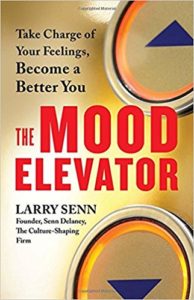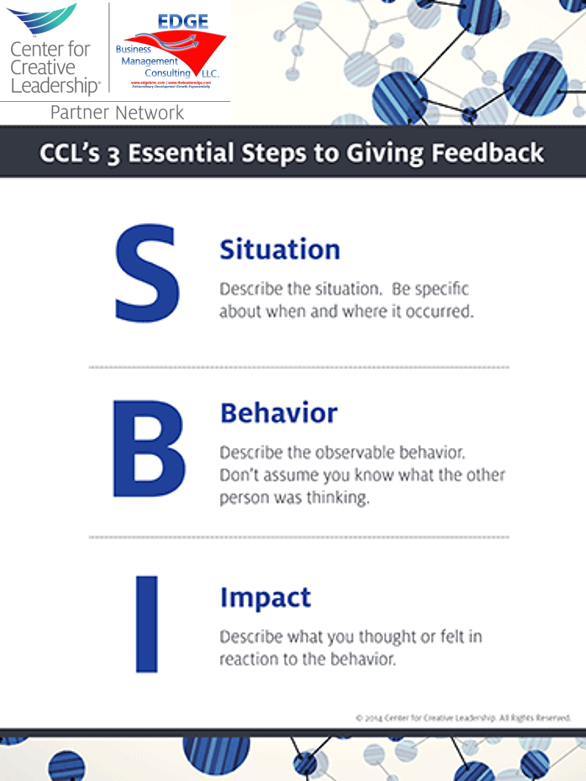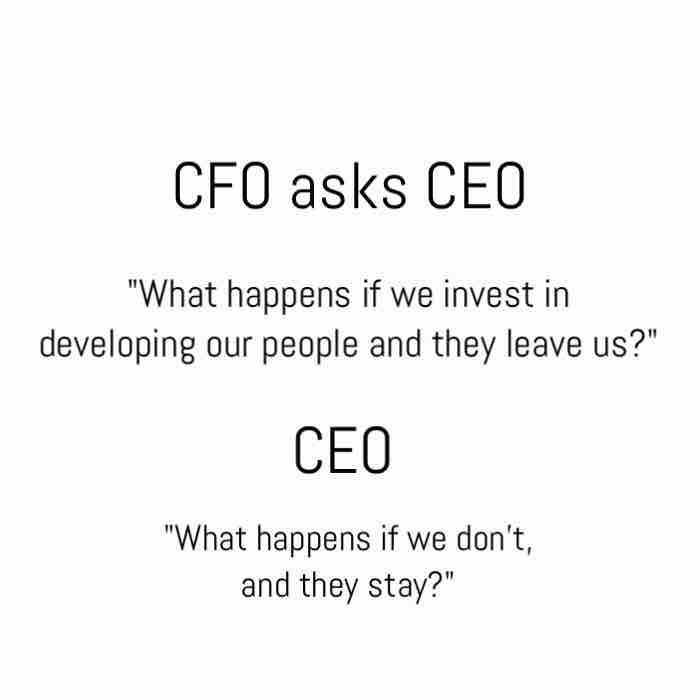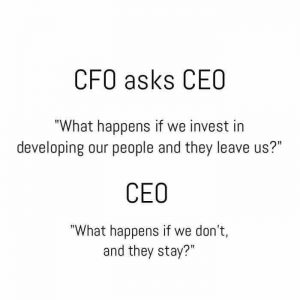The Mood Elevator and The Secrets of an 80-Year-Old Triathlete
Guest post by Dr. Larry Senn
I don’t know how to say the word “retirement” as the concept is foreign to me. I tell people “how can I retire from my purpose” which is to help more and more people live life at their best mentally, emotionally, physically and spiritually.

The Mood Elevator is the best tool I have found to support me and others in that purpose. And Senn Delaney the firm I founded 40 years ago is best at creating healthy cultures where that purpose is alive. I still love writing about the Mood Elevator, speaking about it to groups and being an active partner in a firm that teaches it as part of shaping the culture of companies around the world.
Most weeks I am traveling around the country meeting with, coaching and facilitating culture shaping session. Weekends and most mornings I am running, biking, weight lifting or swimming as part of training for the half dozen sprint triathlons I do each year. I win most in my age group because I’m often the only person in the group (last man standing).
The Mood Elevator is the best tool I have found to support me and others in that purpose.
Family is incredibly important to me, and I am committed to being fit to keep up with all of them including a teen age son we had when my wife was 52 and I was 65. I’m blessed to have raised a very adventurous family with 5 children and 5 grandchildren so in the summers you’ll find me water skiing, off road motorcycle riding, zip lining, or jumping on the trampoline with my kids and grand kids.
This is probably not what most people picture for an 80 year-old so I am frequently asked “how do you do that?”
I think it is largely based on having a purpose which inspires me to need to be my best. For me that purpose is family and the work I do. I can’t do that if I’m not at my best and I can’t be at my best mentally and emotionally if I’m not at my best physically. That belief and the understanding that you use it or lose it and the body is a sacred gift provides me motivation and some discipline. I tell people that when I look at a chocolate chip cookie I see my 17 year old sons face– and I don’t eat it.
For those who want to know some specifics here are my tips from the 82-year old triathlete:
- If you don’t use it, you’ll lose it. This motto came from Dr. Kenneth Cooper who wrote the original book titled It states that the body doesn’t wear out; it rusts out from lack of use. After reading this book I changed my mindset on movement, I had always been an athlete growing up but once I started my business and I got busy I stopped making the time for exercise. This book encouraged me to develop a regular cardiovascular exercise routine and I started running 50 years ago, and I haven’t stopped since.
- Aerobics and Beyond. There are three important types of exercise that I make an effort to incorporate into my routine: aerobics, anaerobic, and stretching. My aerobics is my running- I also swim and bike ride which I picked up after I did my first triathlon at 70 years old. For anaerobic, I do strength training. Strengthening your muscles helps with core strength which prevents back injuries and improves posture, it increases bone density, and increases your metabolism which can help with weight loss. The last and perhaps most neglected form of exercise is As we get older we become stiff and less flexible, I notice in some elderly people that when they’re driving they can’t even turn their neck far enough to see what’s behind them when they’re driving- this is an image that motivates me to stretch regularly.
- Foods You Choose. There is so much information that I have read over the years on what the best food to eat is. I do firmly believe that the food I eat has had a profound impact on my health. I haven’t had to be on any medication, I have had no sign of high cholesterol, blood pressure, or any other medical issues and my doctors are often astounded when they do my blood work on the kind of shape I’m in. Below is the foods I have tried to avoid and what I incorporate daily that has helped me keep healthy.
What I avoid:
- Saturated fats from dairy products, processed or red meat, and the wrong oils (saturated or trans fats) found in most processed food
- Simple carbohydrates and non-naturally occurring sugars found in pastries, desserts, soft drinks, white flour, and most fruit juices
On the other hand, these are what I try to get plenty of:
- Vegetables, whole fruits, and nuts like almonds and walnuts
- Protein mainly from legumes (beans and lentils) and other plant products. If more protein is needed, I use plant-based protein powder supplements. For meat, I choose fish, such as wild caught salmon or tuna.
- The right oils, especially those that have high omega-3s
- Fiber from vegetables, as well as grains such as brown rice, oatmeal, and whole wheat
- Antioxidants, such as those found in blueberries, acai berries, and pomegranate juice
- Water, while limiting juice consumption and cutting out fish
It took me a while to develop and implement these habits and guidelines for myself. All it takes is a small step towards bettering your health. From my experience, it has been so incredibly worth it and allows me the gift to play with my kids and grand kids and do the work I love.
About Dr. Larry Senn
 Dr. Larry Senn pioneered the field of corporate culture and founded in 1978, Senn Delaney, the culture shaping unit of Heidrick & Struggles. A sought-after speaker, Senn has authored or co-authored several books, including two best-sellers. His newest is The Mood Elevator (August 2017), the follow up to his 2012 book, Up the Mood Elevator. You can learn more about Larry and his work at his website, www.themoodelevator.com.
Dr. Larry Senn pioneered the field of corporate culture and founded in 1978, Senn Delaney, the culture shaping unit of Heidrick & Struggles. A sought-after speaker, Senn has authored or co-authored several books, including two best-sellers. His newest is The Mood Elevator (August 2017), the follow up to his 2012 book, Up the Mood Elevator. You can learn more about Larry and his work at his website, www.themoodelevator.com.






